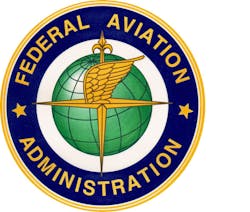FAA: Hot Spot Standardized Symbology
What is happening?
The FAA is standardizing hot spot symbology and verbiage. Hot spots are generally a complex or confusing taxiway or taxiway and runway intersection. Hot spots have a history or potential risk of collision or runway incursion, and require heightened attention by pilots and drivers.
Currently, there is no standard shape to designate a hot spot on airport diagrams within chart supplements and the Terminal Procedures Publication; they are charted with a variety of squares, rectangles, circles, ovals, and ellipses with no pattern or consistency. Beginning May 19, 2022, the FAA will standardize these symbols to three shapes with two distinct meanings: a circle or ellipse for ground movement hot spots and a cylinder for wrong surface hot spots.
May 19, 2022 Hot Spots with three shapes and two meanings.
Today, as depicted in the Lincoln, NE (LNK) FAA Airport Diagram, you can see a myriad of shapes for Hot Spots.
What are the different types of hot spots?
Ground movement hot spots are defined as airport movement areas with a history or potential risk of collision or runway incursion, and where heightened attention by pilots, drivers and controllers is necessary.
A circle or ellipse will depict these hot spots, which include issues such as:
- hold short line infractions
- approach hold issues
- complex taxiway configurations
- movement-non movement boundary area issues
- tower line of sight problems
- marking and signage issues.
Wrong surface hot spots depict locations where an aircraft has inadvertently attempted to or actually departed or landed on the wrong surface. A cylinder will depict these hot spots.
The FAA is also introducing Arrival Alert Notices (AAN) at several airports with a history of misalignment risk. AANs provide a graphic visually depicting the approach to a particular airport with a history of misalignment risk. AANs will incorporate the new standardized hot spot symbology.
Why is this happening?
Wrong surface events continue to be a focus area for the FAA as they can present a significant safety risk. The FAA has taken a number of steps to address wrong surface events but there is still a need to provide a more permanent awareness of these events, especially to general aviation pilots, who comprise 83 percent of wrong surface events. The remaining percentage is pilots operating commercially. The FAA is standardizing hot spot symbology to prevent pilot confusion regarding the meaning of or depiction of hot spots.
When will airport diagrams include the new hot spot symbology?
You will begin to see airport diagrams with this new concept of standardized hot spot symbology in the May 19, 2022 charting cycle.
